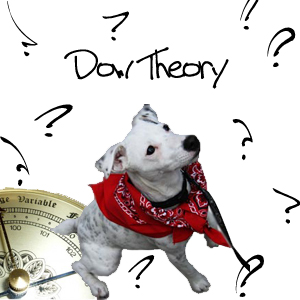What Is The Dow Theory And How It Matters To You As A Trader Or Investor?
The Dow Theory is the oldest method of identifying major trend reversals in the U.S stock market. The main objective of the theory is to determine changes in the primary movement of the market. Charles H.Dow was the developer of the Dow Theory in 1900. The Dow Theory was used as a barometer for business conditions rather than a tool for forecasting stock market prices back then. The principles were further developed and reorganized by William Peter Hamilton in 1922 which was later formalized by Robert Rhea in 1932 and E. George Schaefer into a more complete account of principles that is practical for use today.The Dow Theory in reality enables a trader or investor to take necessary precautions to exit the market when warning signals of stock market reversals are generated. Since the Dow Theory has no forecasting values regarding the duration of the trend, it only takes into account the direction of trend. The theory assumes that majority of the stocks follow the prevailing trend of the market majority of the time. In order to gauge the market, Charles H.Dow created two indexes which are known as the Dow Jones Industrial Average and the Dow Jones Transportation Average presently. So how do you interpret the theory correctly to your advantage? What are the things you need to take note of when interpreting the Dow Theory?
 In order to interpret the theory correctly, you will be required to use the daily closing prices of the 2 averages since intra-day prices are more susceptible to price manipulation, and also the total number of daily transactions on the New York Stock Exchange (NYSE). We should consider ourselves lucky and blessed that with improvements in technology, the closing prices are available to us with not much effort at all.
In order to interpret the theory correctly, you will be required to use the daily closing prices of the 2 averages since intra-day prices are more susceptible to price manipulation, and also the total number of daily transactions on the New York Stock Exchange (NYSE). We should consider ourselves lucky and blessed that with improvements in technology, the closing prices are available to us with not much effort at all.
There are 6 important points to take note of regarding the Dow Theory. They are:
* The average discount everything
This process discounts everything that is made known and predictable regarding the stock that can impact on the demand and supply of the stocks.
* The market has 3 movements
There are 3 simultaneous movements in the stock market. They are the primary, secondary and minor reactions. This is equivalent to the primary, intermediate and short term trends.
* The market has 3 phases
The 3 phases are accumulation, public participation and distribution. The accumulation phase is the first phase when traders and investors are purchasing or selling stock against the general opinion of the market. This is also known as the contrarian strategy where one trades or invests against the opinion of the majority. During this phase, the stock price does not change much because the supply and demand of the stock is being matched by these astute traders and investors who are in the minority absorbing or releasing stock. Eventually, the market catches on and a rapid price change occurs in the second phase, also known as the public participation phase. This occurs when trend followers and other technically oriented investors participate. This phase continues until rampant speculation occurs at the 3rd phase, also known as the distribution phase. At this phase, the astute traders and investors will begin to distribute their holdings to the market.
* Price and volume relationships provide background
The relationship between the price action and volume of the stock should act in harmony. This means that volume should expand on rallies when price advances and contracts when price declines. If volume declines during a price advance and expands on a price decline, this is a red flag that should have warned you that the possibility of a price reversal is very high. Before jumping into conclusion, more conclusive evidence of trend reversals should be derived from the price of the respective averages.
* Price action determines the trend
Bullish and bearish indications are given when the price action of the market agrees with the indicators. However, since the analysis of every individual is different, the best decision is to adopt a conservative approach unless the weight of evidence says otherwise. The trend is said to exist until definitive signals from indicators prove that a reversal has taken place.
* Both the averages must confirm with each other
Logically speaking, in order to have a healthy economy, goods and services produced should also be sold and transported by the companies that provide services for these production companies. Investors should be bidding up the prices of both these companies if the market is truly a barometer of business conditions. Therefore, the two averages should be moving in the same direction and confirm with each other. If either one diverges, it is a warning that an impending change is coming.
One important point to take note of is that there is no existence of any perfect method for analyzing the market. The Dow Theory may be useful in its way but it is a lagging indicator and may be already late when the signals are generated.







